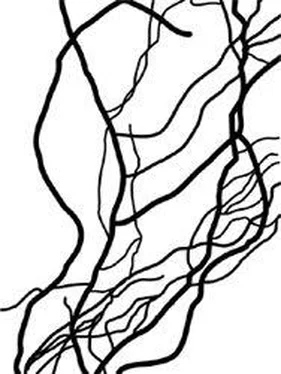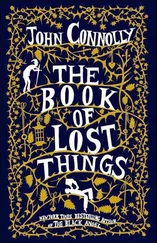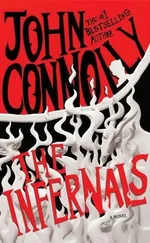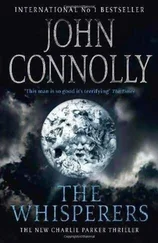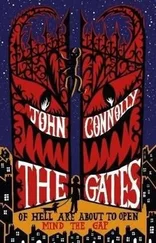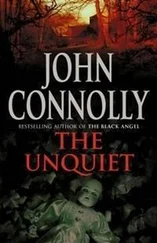The Great Malevolence had once thought about trying to recruit the Shadows as its allies, but the messengers it sent to their kingdom had never returned. They had been absorbed into the blackness, their eyes taken from them, and eventually they had become Shadows themselves. The Great Malevolence had learned that the Shadows could not be used, and it was better if they were not allowed to pollute the Multiverse or interfere with Hell’s efforts to dominate it.
But then the balance of the Multiverse had been disturbed by the actions of men. Humans were endlessly curious, and their curiosity led them to take risks. They had built the Large Hadron Collider to try to re-create the beginnings of their universe, and in the process they had opened a gateway between Earth and Hell that had almost caused the end of their world. They had also begun to investigate the nature of reality, and reality was a delicate business. What was unreal stayed that way only as long as reality and unreality kept to their own sides of the fence. If you opened a gate between the two, then all kinds of confusion reigned. That was how dwarfs ended up being chased by eyeballs, and tentacled entities got trapped in closets, and little girls with a fondness for spiders, and webs for skin, climbed down from walls to bother people.
But even all of the messing about with reality might not have come back to bite the humans had they not gone poking their noses into dark matter. It was all very well deciding that, yes, what they saw when they looked through their telescopes was only 4 percent of the stuff of the universe, and the other 96 percent had to be made up of something else. They called that something else “dark matter” and “dark energy.” Dark matter was the universe’s hidden skeleton, giving structure to universes and galaxies, while dark energy was the force changing universes, forcing galaxies farther and farther apart. Humanity decided that the universe was about 70 percent dark energy and 25 to 26 percent dark matter. Heigh-ho, problem solved, who fancies a cup of tea and a biscuit before we clock off early for the afternoon?
But that wasn’t right. They should have paid more attention to one important word: dark . The dark was where things hid. The dark was the place where unpleasant creatures that didn’t want to be seen waited until the time was right.
The dark was the place in which the Shadows were imprisoned.
By engaging in dark-matter detection experiments—including projects such as Multidark, the Dark Matter Time Projection Chamber, and the Cryogenic Dark Matter search—the humans had alerted the Shadows to their existence. Even in their isolated realm, they had been able to hear the humans: voices, music, rockets, wars, the Shadows had listened to them all. When the detection experiments had begun, it was the equivalent of someone tapping on the outside of a prison wall with a pickax— tap-tap-tap —except that the person doing the tapping didn’t know that there were entities imprisoned inside, entities that were very anxious to escape and smother every light in the Multiverse.
Professor Stefan was right: the Large Hadron Collider had worn thin the walls between dimensions, and the pickax jabs of the detection experiments had done the rest. A hole had been opened, and now the Shadows were about to pour through. The Great Malevolence might have wanted to destroy humanity and burn worlds. It might have wanted misery and ruin. But it also wanted the Multiverse to remain in existence. It wanted to transform universes into branch offices of Hell, and to do that required the continued survival of the Multiverse.
The Shadows wanted only nothingness. They were as much a danger to the Great Malevolence as they were to humanity. This was why Crudford, after a quick return visit to Hell, had come down to Earth. He now believed that he knew why Biddlecombe was the place to which the Shadows had come. Mrs. Abernathy’s heart had hidden itself on Earth, and its blackness had found an echo in the Kingdom of Shadows. She had called out to the Shadows, and an alliance had been formed. She would give the Earth, and then the Multiverse, to the Shadows.
And in return, they would give Samuel Johnson to her.
50. Although unfortunately not Mr. Tuppenny the ice cream man.
51. He did all that in a paragraph. It took me two books. I’m in the wrong business.
52. So how big is the Multiverse, exactly? According to quantum theory, particles can pop into and out of existence, and there are scientists who believe that our universe was the result of just such a quantum “pop.” So if one universe can pop into being, why not many universes? This would require extra dimensions, which is where very complicated string theory comes into play. String theory proposes that our universe is made up of very, very small vibrating strings, and when the strings vibrate in different ways they produce different particles. Think of the strings of a guitar producing different notes, and so the universe can be imagined as a great symphony of particles being produced by an unseen orchestra. Pluck one string and you get a proton; pluck another and you get an electron.
One of the difficulties in understanding string theory lies in the fact that it doesn’t work in our four-dimensional world (the three space dimensions of up/down, left/right, and forward/backward, and the fourth dimension of time). String theory requires eleven dimensions, ten of space—which are buried within our existing three dimensions—and one of time. One of the tasks of the Large Hadron Collider was to find proof of these extra dimensions: if, during the Collider’s proton collisions, some of the bits of shattered particles were found to have gone missing from the sealed vacuum, then that would suggest the possibility that they had disappeared into other dimensions.
Anyway, to get back to our original question of how many universes there may be in the Multiverse, some string theorists suggest the number is 10 500, or one for every possible model of physics that string theory offers. (See, I told you it was complicated. It’s so complicated that this latest version of string theory, the eleven-dimension one, is known as M-theory, and even Edward Whitten, the man who came up with it, isn’t sure what the M stands for.) Mind you, there are some scientists who say that the number of universes in the Multiverse could be far more than 10 500, and that the only way you can get it down to 10 500is by fiddling about with the (coarse) Moduli Space of Kähler and Ricci-Flat (or Calabi-Yau) metrics and then enforcing extra-supersymmetry conditions, which is just cheating, obviously. I mean, everybody knows that.
XXXI
In Which the Funniness of Clowns Is Doubted
THINGS WERE GOING FROM bad to worse inside Wreckit & Sons, which was surprising given how bad things were to begin with. It seemed that, as Samuel and the others drew closer to the highest floor of the store, the nature of reality was becoming more and more distorted. In fact, as far as Samuel was concerned, reality had pretty much given up on Biddlecombe and gone to live somewhere slightly more down-to-earth.
First off, there were the clowns. Everyone trapped in the store was beginning to realize that Wreckit & Sons had been designed with one purpose in mind: to provide a series of threats that would gradually drive the humans to the top floor. While they had made the best use that they could of whatever weapons they could find—bats, balls, bows and arrows, and foam blasters, for the most part—it wasn’t as if the store had been littered with rocket launchers or heavy artillery. The dangers on each floor were simply meant to force them upward, not kill them, or so Samuel believed, although Dan and the dwarfs were pretty convinced that, had the Nosferati managed to get their fangs into them, they would soon have been singing in some heavenly choir, assuming Heaven was willing to let them in.
Читать дальше
